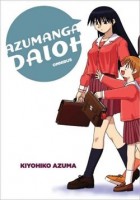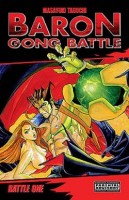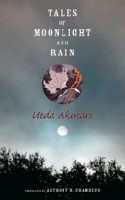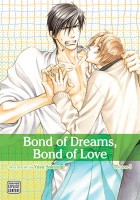 Creator: Hinoki Kino
Creator: Hinoki Kino
Original story: Atsuko Asano
U.S. publisher: Kodansha
ISBN: 9781612623580
Released: December 2013
Original release: 2012
Hinoki Kino’s manga series No. 6 is an adaptation of a series of nine science fiction novels written by Atsuko Asano. The fourth volume of the No. 6 manga was originally published in Japan in 2012. The English-language edition of No. 6, Volume 4 was released by Kodansha Comics in 2013. My introduction to No. 6 was actually through the anime adaptation, but I have been enjoying the manga’s rendition of the story as well. I have had a fondness for dystopian fiction ever since I was introduced to the genre in high school and so I am particularly pleased that a manga series like No. 6 is being released in English. I did find the first volume to be a little rushed and disjointed in places, but each subsequent volume has continued to improve and the series has settled into an excellent pace. The characters and world-building have also been developing rather nicely. Because the series keeps getting better, I was looking forward to reading the fourth volume.
Shion’s close friend Safu has been arrested by the Security Bureau of No. 6 and taken to the Correctional Facility, which may very well mean her death. Rat has known about Safu’s predicament for some time, but it’s something that he has been keeping a secret from Shion, concerned that he would put his own life at risk in order to rescue Safu. Rat is soon proven correct when, by chance, Shion discovers that Safu has been taken. Shion is prepared to do anything that he can to save her, even if that means doing it alone. But, despite his reservations, Rat isn’t about to let that happen. Infiltrating the Correctional Facility won’t be easy. Both Shion and Rat have been classified as dangerous criminal fugitives by No. 6’s authorities which severely limits their movements outside of West Block. Simply getting information about what is happening in No. 6 is a difficult task which will require all of the connections and influence that the two young men can muster. They are at a definite disadvantage and their situation is nearly impossible, but Rat and Shion are determined to come out of it alive however unlikely.
While the previous volume or so took time to further establish the relationships between the characters in the manga, No. 6, Volume 4 ratchets up the pace again, moving the plot forward quite handily. This is not to say that Kino has forgotten the series’ main players for the sake of the story. In fact, there are some absolutely wonderful character moments in the fourth volume. These are critical for the development of both the plot and the characters themselves. It is quite clear by this point in the manga that Shion and Rat deeply care about each other. But in No. 6, Volume 4 Shion is forced to confront just how vicious Rat can be, something that he has been avoiding. Rat has never hesitated to intimidate or threaten other people and is a master manipulator. Though up until now he has largely (but not completely) kept his overt violence in check, when given a reason and opportunity he can be absolutely terrifying. Rat’s actions in this volume are nominally for Shion’s sake, but he also has an intense, deep-seated hatred and anger towards No. 6 which lends to his brutality.
West Block has always been a violent place, but at least its residents are honest and forthright about it. They hold no delusions as they often literally have to fight to survive. On the other hand, there’s No. 6. The city is presented as a perfect society even though it is anything but. Granted, most of No. 6’s citizens are completely unaware that anything untoward is going on and those who do suspect find themselves conveniently disappeared. Because of this, No. 6 is actually the more terrifying of the two places. What exactly is going on in No. 6 has yet to be made clear. There have been some hints, and Shion and the others have uncovered a few clues, but even some of No. 6’s highest ranking officials aren’t privy to that information. All that is known is that some sort of terrible experiment is being conducted on the city’s population. However, the goal, purpose, and motivation behind that experiment hasn’t been revealed yet. With plenty of questions remaining to be answered and the story increasing in intensity, I’m definitely looking forward to reading the next volume of No. 6.








